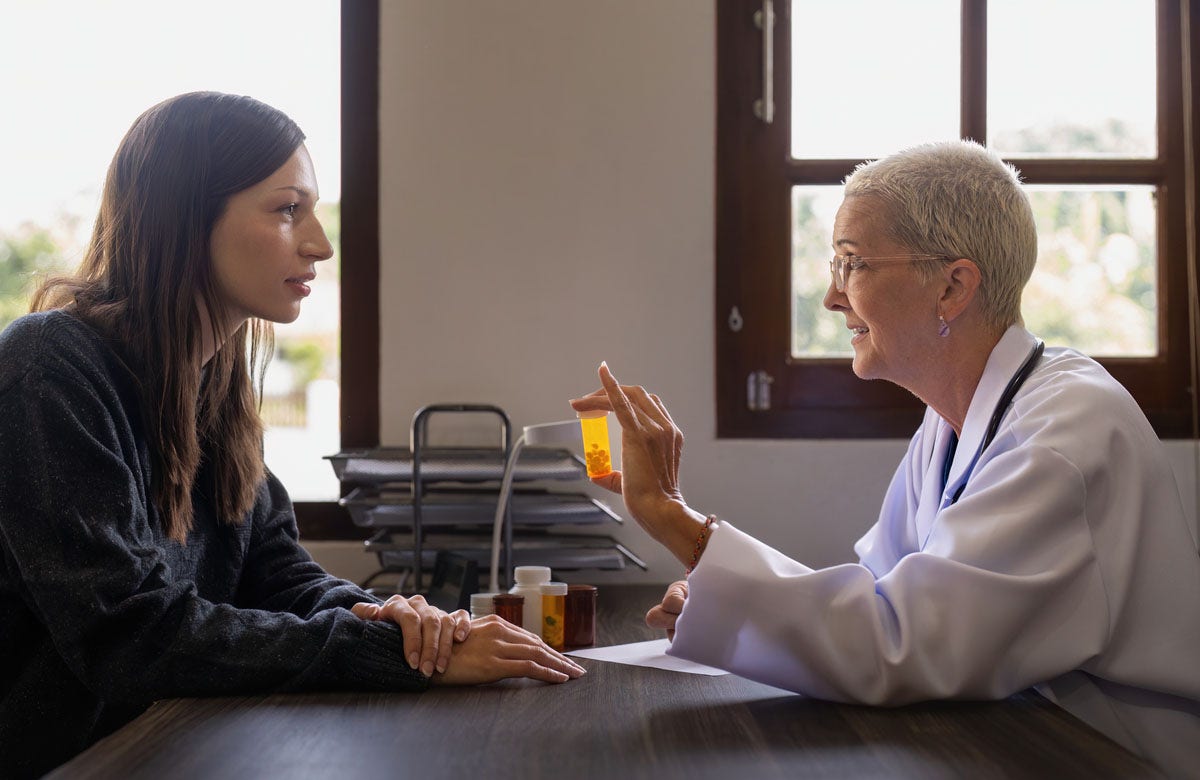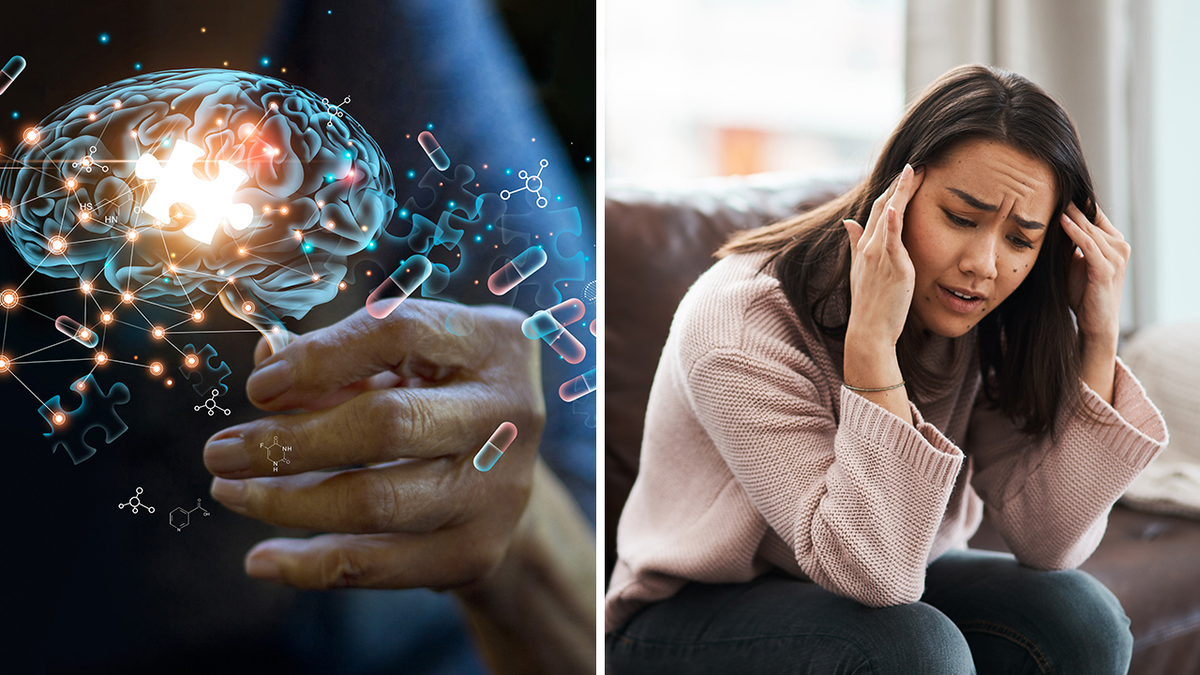Health
What Extreme Heat Does to Your Body

Heat is the leading cause of weather-related deaths in the United States. While the human body is able to withstand high temperatures, unprecedented extreme heat driven by climate change is challenging our ability to adapt. As heat waves become more common, it’s important to know why heat can be so dangerous and who is most at risk for heat-related illnesses. Here’s what happens inside your body when it gets too hot.
How the body handles heat
When you start to heat up from exertion or the temperature outside, your body works to cool itself by moving warmer blood away from your internal organs and cooler blood toward them. It has two main techniques for doing this.
Blood is redistributed from your body’s core to its periphery in order to release heat through your skin. Capillaries at the surface of the skin fill with blood, which is why people often look flushed when they are hot.

You also start to perspire. As sweat evaporates, it cools the skin, lowering the temperature of the blood below. That blood then travels back to your internal organs to cool them down.

The body uses these two techniques all the time to maintain its internal temperature, even when you don’t feel particularly hot.
What happens when it’s too hot
When the air temperature is hotter than skin temperature, which is typically about 90 degrees, the body gains more heat than it can release.
In dry climates, sweat evaporation can continue to cool the body even at high temperatures, but that process becomes less effective as humidity increases. In very humid conditions, sweat doesn’t evaporate; instead, it just drips off the skin without cooling it. That’s why dry heat can feel cooler than humid heat.
As the body works harder to stay cool, the need to increase circulation to the periphery causes your heart rate to go up and your blood pressure to drop. (One cause of injury during heat waves is people fainting when they stand up because their blood pressure is too low.) As you become dehydrated from sweating, your blood volume decreases, lowering blood pressure even further.

Heat can become dangerous starting at temperatures as low as 80 degrees for older adults and people with pre-existing conditions that affect circulation or the sweating response, such as diabetes. People with cardiovascular issues are especially at risk because of the strain on the heart.
If you are young and healthy, temporary exposure to high heat will cause your internal temperature to rise a degree or two and then plateau; this is generally safe, though it may make you feel uncomfortably hot. But in more extreme weather conditions — for instance, 104 degrees and 50 percent humidity — or when you exert yourself in moderate heat and humidity, the body’s internal temperature continues to rise and problems can start to emerge.
The danger of overheating
Heat exhaustion sets in when you have a high internal temperature, generally between 101 and 103 degrees, and usually in combination with dehydration. (A fever can also cause body temperatures this high, especially in children, but it won’t lead to the same cascade of problems.) At that point, you will start to feel fatigued and, if you’re doing an activity, your muscles will tire more quickly. This is thought to be a protective signal from your brain to stop exerting yourself, which can further raise your temperature. You might also experience nausea, headache, a fast heart rate and shallow breathing.

Heat stroke occurs when the body reaches an internal temperature of 104 degrees and above. By this point, blood pressure has often dropped too low for too long, causing internal organs to become deprived of blood and therefore oxygen. The high temperature itself can also cause cell death, leading to organ failure.

Some of the most important organs affected by extreme heat are the kidneys, heart, gut and brain.
When the body is dehydrated, the brain sends a signal to stop circulating as much blood to the kidneys to avoid losing fluid in the form of urine. The kidneys quickly become deprived of oxygen, which damages cells there and can cause kidney failure.
When the heart, which is working in overdrive, can’t keep up with the demand of increased circulation, it also doesn’t receive enough blood and becomes deprived of oxygen. This can cause potentially deadly damage. It’s especially a concern for people with underlying conditions that weaken the heart muscle.
Cells in the gut appear to be particularly susceptible to heat. When they become too hot, the wall of the intestines can start to break down, allowing bacteria to leak into the bloodstream.

The defining characteristic of heat stroke is confusion and delirium as the brain becomes overheated and starved of oxygen. The hypothalamus, which acts as the brain’s internal thermometer, can even start to malfunction and stop sending the signal that the body needs to cool itself. As a result, people with heat stroke might stop sweating while their organs burn up inside.
Exactly how long it takes someone exposed to high temperatures to develop heat stroke and experience permanent organ damage or death differs from person to person. It’s possible to adapt to hot weather to a certain extent — some athletes accustomed to heat are able to function even with internal temperatures above 104 degrees.
When someone does start to experience symptoms of heat stroke, cooling the person down immediately is essential; every minute counts when it comes to minimizing organ damage. The best and fastest way to do this is to immerse the person in an ice bath. If that’s unavailable, wrapping him or her in cold, wet cloths can also help.


Health
Drinking alcohol is linked to six types of cancer, experts say: ‘It’s toxic’

It’s long been known that no amount of alcohol is good for the body — and now new research spotlights the potential harm it can cause.
More than 5% of all cancer cases are caused by drinking alcohol, according to the Cancer Progress Report 2024 from the American Association for Cancer Research (AACR).
Among the modifiable risk factors for cancer, alcohol is the third biggest, behind obesity (7.6% of cases) and cigarette smoking (19.3%).
TO REDUCE CANCER RISK, SKIP THE ALCOHOL, REPORT SUGGESTS
“Excessive levels of alcohol consumption increase the risk for six different types of cancer, including certain types of head and neck cancer, esophageal squamous cell carcinoma, and breast, colorectal, liver and stomach cancers,” said Rajarshi Sengupta, PhD, lead author of the AACR Cancer Progress Report 2024, in a statement sent to Fox News Digital.
More than 5% of all cancer cases are caused by drinking alcohol, according to the Cancer Progress Report 2024 from the American Association for Cancer Research. (iStock)
“Further, research shows that alcohol intake at an early age can increase the risk of cancer later in life.”
Based on these findings, limiting or eliminating alcohol can reduce the risk of developing alcohol-related cancers by 8% and the risk of all cancers by 4%, the report noted.
Addiction expert warns of risks
There has been a “roller coaster of information” about whether alcohol is harmful, according to addiction psychiatrist Dr. Adam Scioli of Caron Treatment Centers in Pennsylvania.
“There have even been reports for years that it could be beneficial for one’s health — but we know now that alcohol ingestion is one of the modifiable risk factors for cancer,” Scioli, who is not affiliated with AACR, told Fox News Digital.
‘DOES SMARTPHONE EXPOSURE CAUSE BRAIN CANCER?’: ASK A DOCTOR
Around 75,000 Americans each year are diagnosed with a cancer that is linked in some way to alcohol use, according to Scioli.
The more someone drinks — both in volume and frequency — the higher the risk, he warned.

Among the modifiable risk factors for cancer, alcohol is the third biggest, behind obesity (7.6% of cases) and cigarette smoking (19.3%). (iStock)
“Alcohol is a toxin,” Scioli said.
“We’ve long known that it impacts any number of organs, essentially starting with the brain and working its way down to the colorectal system.”
Is there a ‘safe’ amount?
Moderate alcohol use is defined as one drink or less in one day for women.
For men, it is two drinks or fewer per day, according to the Centers for Disease Control and Prevention (CDC).
“We’ve long known that alcohol impacts any number of organs, starting with the brain and working its way down to the colorectal system.”
“Drinking alcohol in moderation may increase your overall risks of death and chronic disease,” the agency stated on its website.
“Even low levels of alcohol use (less than one drink per day) can raise the risk of certain cancers.”
Scioli agreed, emphasizing that “we can definitely say there’s no added health benefit to ingestion of alcohol.”
“The line between safety and danger is debatable, and is different for each person.”
While risk factors like tobacco use are widely known, public awareness about the link between alcohol and cancer is still low, according to Sengupta.

Moderate alcohol use is defined as one drink or less in one day for women, and two drinks or fewer for men, per the CDC. (iStock)
Most Americans (51%) are not aware that alcohol increases cancer risk, per AACR data.
“It’s been flying under the radar for far too long — especially given the number of Americans who have met the criteria for alcohol use disorder, which is around 29 million Americans in 2023,” said Scioli.
What needs to change?
The good news, according to Scioli, is that with modifiable risk factors like alcohol, reducing the intake decreases the risk.
CLICK HERE TO SIGN UP FOR OUR HEALTH NEWSLETTER
As the report stated, those who are successful in decreasing their drinking or abstaining below those moderate risk levels will see a risk reduction in overall cancers, he noted.

Around 75,000 Americans each year are diagnosed with a cancer that is linked in some way to alcohol use, an expert said. (iStock)
“We need to do a much better job of making the public aware of the risks inherent in drinking — particularly moderate to heavy drinking,” Scioli said.
“And we need to make the public aware that there are mechanisms by which they can access help if they are unable to moderate their drinking or quit on their own.”
For more Health articles, visit www.foxnews.com/health
To help raise awareness, Sengupta of the AACR called for public messaging campaigns, “such as cancer-specific warning labels displayed on alcoholic beverages.”
Along with that, she told Fox News Digital, “effective clinical strategies that reduce or eliminate alcohol consumption must be considered to reduce the burden of alcohol-related cancers.”
Health
Intermittent Fasting + Walking: The Science-Backed Combo That Helped This Grandma Lose 3X the Weight

Sign Up
Create a free account to access exclusive content, play games, solve puzzles, test your pop-culture knowledge and receive special offers.
Already have an account? Login
Use left and right arrow keys to navigate between menu items.
Use escape to exit the menu.
Health
New schizophrenia drug gets FDA approval, taking novel approach to treating brain disorder

A new drug has been approved for the treatment of schizophrenia in adults.
On Thursday, the U.S. Food and Drug Administration (FDA) approved COBENFY (xanomeline and trospium chloride), an oral medication that is manufactured by Bristol Myers Squibb in New Jersey.
This marks the first new class of medications for the brain disorder in several decades, according to a press release.
5 MYTHS ABOUT SCHIZOPHRENIA, ACCORDING TO A MENTAL HEALTH EXPERT: ‘HUGE STIGMA’
COBENFY is expected to be available in the U.S. in late October, the company noted.
A new drug has been approved for the treatment of schizophrenia in adults. (iStock)
“Today’s landmark approval of our first-in-class treatment for schizophrenia marks an important milestone for the community, where after more than 30 years, there is now an entirely new pharmacological approach for schizophrenia — one that has the potential to change the treatment paradigm,” said Chris Boerner, PhD, board chair and chief executive officer at Bristol Myers Squibb, in the press release.
STUDY REVEALS HEAVY MARIJUANA USE IS LINKED TO SCHIZOPHRENIA
Schizophrenia is a serious mental illness that affects a person’s thoughts, feelings and behaviors.
It often causes hallucinations, delusions, disordered speech and loss of touch with reality, Mayo Clinic states on its website.

COBENFY (xanomeline and trospium chloride) is an oral medication that is manufactured by Bristol Myers Squibb in New Jersey. (Bristol Myers Squibb)
The disorder can also lead to lack of emotional expression, lack of motivation, cognitive dysfunction and social withdrawal.
Approximately 2.8 million people in the U.S. and 24 million people globally are living with schizophrenia.
AI-DISCOVERED DRUG SHOWS ‘ENORMOUS POTENTIAL’ TO TREAT SCHIZOPHRENIA: ‘REAL NEED FOR BETTER TREATMENT’
The disorder has traditionally been treated with antipsychotic medications, but around 40% of patients do not respond to treatments and 60% experience “inadequate improvement” in symptoms or “intolerable side effects,” studies have shown.

COBENFY is expected to be available in the U.S. in late October, the company noted. (Bristol Myers Squibb)
COBENFY works differently than the currently available schizophrenia medications.
“Due to its heterogeneous nature, schizophrenia is not a one-size-fits-all condition, and people often find themselves in a cycle of discontinuing and switching therapies,” said Rishi Kakar, MD, chief scientific officer and medical director at Segal Trials and investigator in the drug’s clinical trials, in the release.
“Schizophrenia is not a one-size-fits-all condition, and people often find themselves in a cycle of discontinuing and switching therapies.”
“The approval of COBENFY is a transformative moment in the treatment of schizophrenia because, historically, medicines approved to treat schizophrenia have relied on the same primary pathways in the brain.”
“By leveraging a novel pathway, COBENFY offers a new option to manage this challenging condition.”

“Today’s landmark approval of our first-in-class treatment for schizophrenia marks an important milestone for the community,” said Chris Boerner, PhD, board chair and chief executive officer at Bristol Myers Squibb. (iStock)
Sam Clark, founder and CEO at Terran Biosciences — a biotech company that develops treatments and technologies for neurological and psychiatric diseases in New York City — commented on the new approval in a statement sent to Fox News Digital.
“I am excited that the FDA has just approved [COBENFY] as a treatment for patients with schizophrenia, marking a big leap forward in the psychiatry space,” he said.
“These patients live with a difficult disease, and this drug with a novel mechanism of action will surely make a significant impact,” Clark continued.
“We look forward to seeing the renaissance continue as this approval paves the way for future breakthroughs and novel patient-focused therapeutics.”
CLICK HERE TO SIGN UP FOR OUR HEALTH NEWSLETTER
The approval follows three phases of clinical trials in which COBENFY was shown to result in a “statistically significant improvement in illness.”

Schizophrenia is a serious mental illness that affects a person’s thoughts, feelings and behaviors and often causes hallucinations and delusions. (iStock)
In terms of safety, the medication’s most common side effects during clinical trials were nausea, indigestion, vomiting, diarrhea, constipation, hypertension, abdominal pain, accelerated heart rate, dizziness and gastroesophageal reflux disease, the release stated.
Patients with certain existing medical conditions may experience other, more serious risks.
For more Health articles, visit www.foxnews.com/health
People should discuss potential complications with a doctor before starting the medication.
Fox News Digital reached out to Bristol Myers Squibb and the Schizophrenia & Psychosis Action Alliance requesting comment.
-

 News1 week ago
News1 week agoToplines: September 2024 Inquirer/Times/Siena Poll of Pennsylvania Registered Voters
-

 Business1 week ago
Business1 week agoVideo: Federal Reserve Cuts Interest Rates for the First Time in Four Years
-

 News7 days ago
News7 days agoVideo: Who Are the Black Swing Voters?
-

 Politics1 week ago
Politics1 week agoDem lawmakers push bill to restore funding to UN agency with alleged ties to Hamas: 'So necessary'
-

 Politics1 week ago
Politics1 week ago'I've never seen this': Top Republican details level of Secret Service 'lack of cooperation'
-

 News1 week ago
News1 week agoElection 2024 Polls: Florida
-

 World1 week ago
World1 week agoCritics slam landmark EU competitiveness report as 'one-sided'
-

 Finance1 week ago
Finance1 week agoThis ETF uses ChatGPT to invest like Warren Buffett

















